
If you’re a home gardener like me, you end up with a mountain of veggies during peak harvest season. Unless you host a weekly neighborhood cookout, it’s almost impossible to eat everything fresh. That’s where freezing your veggies becomes a total game-changer. Freezing is one of the easiest and most cost-effective ways to save your garden harvest for future meals, and with a little know-how, you can keep enjoying those homegrown flavors all year long.
Why Freeze Garden Vegetables?
Freezing veggies from your own garden not only saves money but also keeps that unbeatable just-picked taste. When compared to canning or dehydrating, freezing locks in more nutrients and keeps flavors pretty close to fresh. With a big haul, the freezer quickly becomes your best friend, especially for high-yield crops like beans, peas, corn, and leafy greens that can easily fill up your fridge in a hurry.
Most home gardeners I know turn to freezing for convenience. If you prep and bag your veggies right away, pulling out a pack of green beans or carrots in the middle of winter feels downright satisfying. Plus, it cuts way down on food waste, which always brings a sense of accomplishment, knowing your hard work isn’t going down the drain.
Beyond saving money and food, freezing lets you keep the variety going on your dinner table no matter what time of year. You can easily reach for a bag of frozen kale or corn and add homegrown goodness to any meal. It’s also safer than canning for many folks, since there’s no risk of spoilage if you follow basic freezer storage steps. That peace of mind is part of why freezing remains a trusted method among busy gardeners.
Best Vegetables to Freeze From Your Garden
Some veggies handle freezing like champs and come out of the freezer almost as good as new. If you’re wondering what vegetable freezes the best, peas and green beans are at the top of my list, as they keep their texture, color, and sweet flavor. Here’s a rundown of the vegetables that freeze really well and what’s good to keep in mind with each one:
- Green Beans: Snap beans freeze great. Just wash, trim, cut if you like, and blanch before freezing.
- Peas (Sugar Snap, Snow, or Shelling): Peas hold on to their sweetness and texture after freezing. Just shell or trim & blanch.
- Corn: Corn off the cob (or on the cob, if you have space) keeps its flavor, especially if you blanch before freezing.
- Broccoli: A quick blanch keeps broccoli tasting fresh and avoids that mushy texture you get from overcooking.
- Cauliflower: Prepped and blanched, cauliflower keeps nice and firm for soups or roasting later in the season.
- Carrots: Baby carrots or slices freeze really well after a quick blanch, going straight from freezer to soup or stir fry.
- Spinach and Kale: These greens lose some texture but stay super useful in smoothies, soups, and casseroles.
- Zucchini (shredded or sliced): Shredded zucchini is awesome for baking, while slices fit right into skillet meals.
- Bell Peppers: No blanching needed. Just chop and freeze. They soften but still add loads of flavor to cooked dishes.
These vegetables tend to keep their flavor and nutritional value, making them a smart pick for any freezing session. Don’t forget you can also try extras like Swiss chard or even chopped leeks for future stews and sautés. The trick is to prep and freeze right away, while the veggies are at their peak.

Vegetables to Avoid Freezing
Not every garden crop likes the deep freeze. Some come out with strange textures, off flavors, or plain old mushiness. One that really shouldn’t go in the freezer is potatoes. Raw potatoes get weird and grainy. Even cooked ones can lose that fluffy texture unless you prep them just right. Lettuce, cucumbers, and radishes also break down into a soggy mess.
- Lettuce and Tender Greens: These get limp and watery, so it’s better to eat them fresh.
- Raw Potatoes: Freezing turns them grainy or glassy. Cooked mashed potatoes do a little better if you really want to freeze them, but they’re still not ideal.
- Cucumbers: Freezing gives them a spongelike texture. They’re best used for fresh salads or quick pickling.
- Radishes and Watermelon: Too much water content means these veggies turn to mush after thawing. They are much better used fresh.
- Onions (Whole): While chopped onions freeze fine, whole onions lose their texture, so slice or chop before freezing for best results.
Sticking with veggies that naturally freeze well makes the whole process more rewarding. Nobody likes a disappointing side dish after all that work in the garden, so make sure to focus your freezing efforts on the best candidates.
Step-by-Step Guide: Freezing Vegetables Straight from the Garden
Yes, you can freeze vegetables straight from the garden, but taking a few steps first helps them keep their quality in the freezer. Most veggies need a quick blanch before hitting the freezer. Blanching means plunging them in boiling water for a short time, then cooling fast in ice water. This little routine keeps the colors bright, stops enzymes that mess with taste and texture, and knocks out any surface bacteria that could hurt storage.
- Pick at Peak Freshness: Harvest in the morning when the veggies are crisp and full of flavor.
- Clean Them Well: Rinse off dirt and bugs, and trim off any stems or damaged spots for the best quality.
- Cut Them Up: Slice, chop, or leave them whole, depending on how you’ll use them later. Smaller pieces freeze more quickly.
- Blanch (If Needed): Drop veggies in boiling water for 2 to 4 minutes (check specific times per veggie), then plunge into an ice bath to stop cooking right away.
- Drain and Dry: Pat veggies dry so extra water doesn’t form ice crystals in the freezer, which can ruin texture.
- Pack and Label: Freeze in single layers first, then transfer to airtight bags or containers. Always label with the date and contents so you know what to use first.
Skipping blanching on veggies that need it might save time, but the results usually don’t hold up over weeks or months in the freezer. Some veggies, like chopped peppers and sliced onions, are fine without blanching, but most do better with this quick step. Iowa State University Extension has a super detailed guide with blanching times for loads of homegrown veggies if you need a reference (source).
Another handy tip is to freeze your chopped veggies on a lined baking sheet before bagging them up. This helps prevent pieces from sticking together in big lumps and makes it easier to grab just what you need for a future recipe. Once frozen solid, you can bag them up for longer storage.
A Blanching Pot is essential – I got this one off Amazon.
Granite Ware Blanching and Strainer Pot with Lid
Freezing Green Vegetables: What Works and How
Green veggies are a freezer staple, especially when you want to brighten up cold-month meals. So, which green vegetables freeze well? Think green beans, peas, broccoli, spinach, kale, and even chopped chard. Blanching is super important for green veggies because it helps lock in the color and keeps them from turning brownish after freezing.
Here’s how I handle green veggies in my freezer lineup:
- Green Beans & Peas: Brief blanching keeps them crunchy and flavorful. Spread out on a baking tray before freezing to keep them from sticking together.
- Broccoli & Cauliflower: Cut into bite-sized florets, blanch, and dry before freezing to stop them from clumping together in the bag.
- Spinach & Kale: Blanch, squeeze out extra moisture, and pack into small portions for soups and smoothies. Some people love using silicon muffin pans to freeze one meal’s worth of greens at a time. That way, it’s easy to pop out as much as you need.
Mixing and matching different greens lets you put together freezer-friendly blends for stir fries and sautés without much planning. Don’t forget you can also freeze herb mixes and toss a handful into pasta, soups, or egg dishes for an extra boost of garden freshness.
Green vegetables naturally tend to be high in vitamins and minerals, so freezing them at peak freshness helps lock those healthy benefits in place. Whether you’re filling up a blender for smoothies or cooking up a hearty stew, these freezer favorites are real meal savers.
Troubleshooting: Common Challenges with Freezing Garden Vegetables
Even with the best prep, freezing garden veggies can come with a few bumps. Here are some simple fixes for the challenges I’ve run into while freezing different vegetables from my garden:
- Freezer Burn: This happens when veggies get exposed to air. Make sure to use airtight bags or containers and squeeze out as much air as you can before sealing. Vacuum sealing is an option for long-term storage.
- Loss of Flavor: Old veggies or skipping the blanch step can zap the taste. Always freeze at peak freshness and don’t skip the blanch. Using up freezer veggies within a year helps keep flavors strong.
- Mushy Texture: Some veggies just don’t handle freezing well, like cucumbers or lettuce. For those that do, try using frozen veggies in soups, stews, or baked dishes where texture matters less. If you do end up with a few mushy pieces, blend them into smoothies or purees.
If you’re not happy with how a certain veggie freezes, consider alternative preservation methods like canning, fermenting, or dehydrating—sometimes mixing in some variety works best for a diverse harvest.
Best Practices for Long-Term Storage
Storing your veggies correctly after freezing makes a huge difference. Label each container or bag with the veggie type and date, then use older ones first. I like to organize my freezer so I can grab what I need without digging forever. It saves time and keeps everything rotating to make sure nothing gets lost and wasted.
Here’s a simple storage tip: Try to keep your freezer near full. A packed freezer holds temperatures more steadily, which helps preserve the quality of your veggies. Most frozen garden veggies are best used within 8 to 12 months for peak flavor. Freezers that maintain a constant temperature avoid freezer burn and flavor loss much better, so a little organization pays off in every meal you make.
One more tip for keeping things organized: store chopped or blanched veggies flat in resealable bags so they stack easily. This way, you make the most of freezer space and can see everything at a glance. If you tend to freeze lots of different veggies, keeping a list or inventory sheet taped to the freezer door helps you track down exactly what you need.
Amazon has a great selection of Freezer Bags just follow this link:
Freezer Bags
I do a lot of freezing and have found I can’t live without my vacuum sealer. There are many on the market now starting as low as 29.99.
Vacuum Sealers for Freshness in Freezing
Frequently Asked Questions
What vegetable freezes the best?
Green beans and peas are some of the top performers. They keep their flavor, texture, and color really well when frozen properly and can be used for everything from stir fries to casseroles.
What vegetable should not be frozen?
Lettuce, cucumbers, and raw potatoes don’t freeze well. They get mushy or grainy when thawed, so they’re better used fresh or for specialty dishes that use their crispness.
Can you freeze vegetables straight from the garden?
You can, but for long -lasting results, always clean and blanch them first. This keeps color, texture, and flavor at their best in the freezer. Some vegetables need a little prep—check individual recommendations for details.
What green vegetables freeze well?
Green beans, peas, spinach, kale, broccoli, and chard all freeze really well. Blanching before freezing makes a difference for their quality and keeps them ready for quick meals.
Keep Enjoying Your Garden All Year
Freezing is a practical way to stay stocked with your favorite garden flavors even as the seasons change. With a little prepping, most homegrown veggies can taste like summer well into the winter. If you’ve got extra space in your freezer, it’s worth filling up now. You’ll thank yourself in a few months when you’re still cooking with your garden’s bounty.
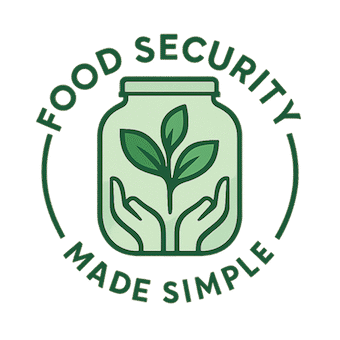
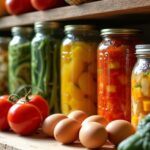

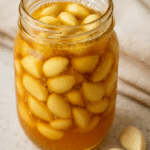

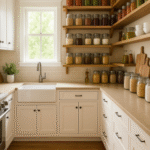
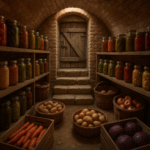
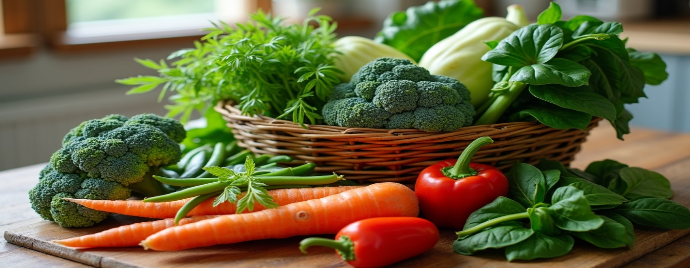
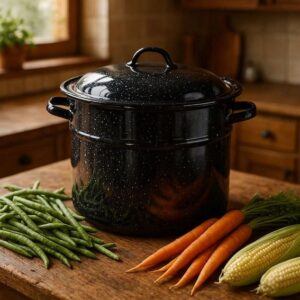
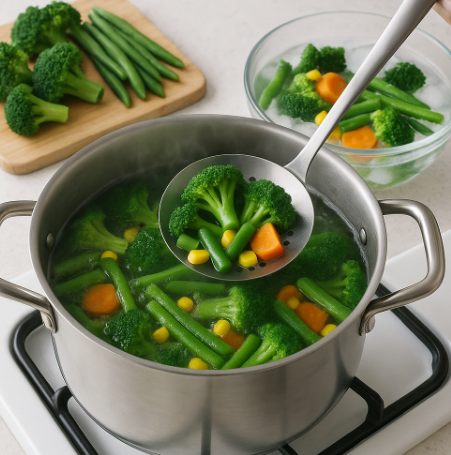
This is a lot of really good information. My husband and I plan to start a nice vegetable garden next year now that we have the space for it. But, we’re total beginners. Your lists of veggies that freeze well and ones that don’t are extremely helpful, I’m definitely bookmarking this post so I can reference it next year when we get started. We love creating veggie-filled dishes like chow mein, stir-fries, and rice. So knowing what to do and how to best preserve some in the freezer will be so valuable.
So glad you found it helpful! ???? Starting your first garden is exciting—you’ll love having homegrown veggies ready for your stir-fries and rice dishes. Freezing really makes it easy to enjoy them year-round. Best of luck with your garden next year! ????